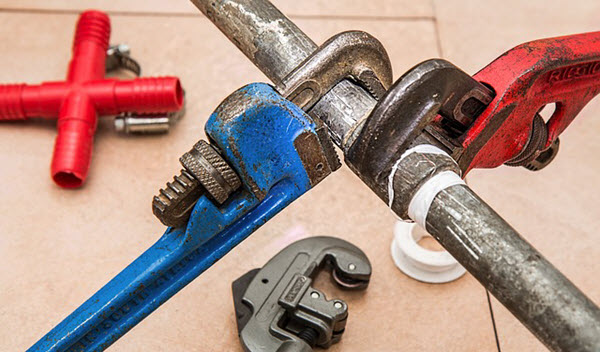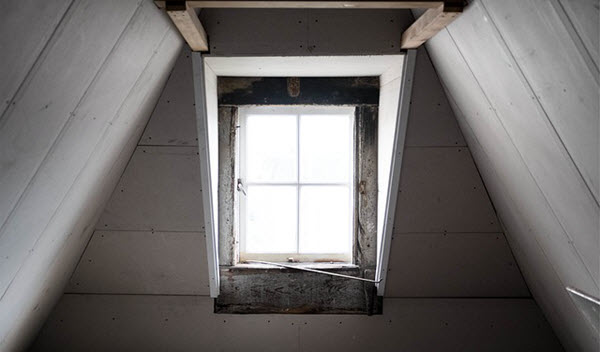Warning: 7 Home Inspection Pitfalls That Can Cost You A Fortune
By Dumb Little Man
October 5, 2016
Conducting a building inspection is essential if you’re planning to buy a property. When done right, it can save you time, money and a lot of headaches.
To avoid nasty surprises, here are 7 of the most common costly home inspection pitfalls you need to know- including ways to address them.
1. Faulty plumbing
Faulty plumbing doesn’t always have to involve busted pipes. Clogged and leaking pipes count, too.
Leaking pipes are easy to detect by just a visual inspection when pipes can be seen by the inspector. There are also other clues like dampness under the house.
However, when it comes to clogged pipes, you need to do more than just a visual check. You need to gauge the water pressure from all the taps in the house. Flushing the toilet can also help as well.
Once you turn on the taps, it’s a good idea to check the water that comes out of them. If the water is dirty, there’s a good chance that the pipes are deteriorating. Replacing pipes, in this case, won’t only be costly but time-consuming, too.
2. Leaky roof
Small leaks aren’t easy to recognize until something major happens. If water gets into your exterior wall and mould starts to form, you should be prepared to do a major renovation that can include both your home interior and exterior.
Aside from leaks, you should also keep an eye out for any discoloration or spotting in the ceiling. This is usually an indication of moisture penetration.
If a stain is damp, it can mean that the leaks are recurring and that immediate repair should be done to prevent extensive damage. However, for stains that are dry, you may have to do more work to find out their exact cause.
A leaky roof can happen either from physical deterioration of the roofing materials or from damage caused by a windstorm or unusually heavy rain.
3. Troubled wiring
If you are buying an older property, make sure to double check the wiring since old homes typically have original wiring that is considered less safe and needs to be replaced.
If there are ceramic fuses it’s almost certain the property has original wiring. It also means the electrical system is unlikely to have safety switches to prevent surges and the like.
See Also: 10 Important Home Features That Home Buyers Want
4. Damp attic
There are a lot of factors that can cause damp attic spaces, such as poor insulation and ventilation.
Over time, these factors can make the area favourable for mould and mildew to form. This results in the weakening of the roof and building materials. Before you know it, you’re faced with an extensive and expensive repair. Fixing damp attic spaces can be expensive, depending on how severe the associated damage is.
5. Rotting Wood
Rotting wood can easily go unnoticed, unless you specifically look for it. And if you are not quick in recognizing it, it can spread quite far and wide. This makes it especially dangerous and costly.
Rotting frequently happens in wooden window frames, exterior doors and decks. It can also happen in interior spaces, such as the floor around dishwashers, toilets and sinks. If you are going to inspect a home, don’t rely on looks alone. Because wood can be painted, rotting wood can be hidden from view.
6. Lack of basic security features
Although it’s relatively easy to get a security system to protect your home, it’s essential that it also has basic security features. Having proper and functional locks in its doors and windows , for example, can help protect the property while you’re still deciding on what you should do with it.
Smoke alarms are also an essential requirement for any home.
See Also: 10 People in Urgent Need of Smart Home Security Systems
7. Poor ventilation
Poor ventilation can greatly affect the interior walls of the home as well as certain structural components. If it can be remedied by preventing water getting to the interior walls or adding ventilation fans, then you won’t have to worry about spending a lot of money on it.
However, if the cause of the faulty ventilation requires replacement of a structural component, it’s going to be much more expensive.
How To Avoid Home Inspection Problems
One of the first things you can do before buying a home is to ask the vendor about the property. Vendors are required to disclose any material issues about their property.
Unfortunately, most selling agents say it’s the buyer’s obligation to check out the property. Since they are trying to sell a property, you can expect them to focus on the positives of the property.
For your peace of mind and security, your best option is to hire insured and experienced building inspector. Also look for properties where a reliable inspection business has carried out an inspection that you can access straightaway.
Inspectors, such as Eyeon, carry out a thorough assessment of properties and provide a detailed report. They also really emphasize the importance of following up with the inspector about his inspection and the resulting report. Follow this process so you can avoid falling victim to these home inspection pitfalls.
Purchasing a home is a huge decision that involves a lot of money and time on your end. Avoid years of buyer’s regret by getting a building inspection report.
Dumb Little Man
At Dumb Little Man, we strive to provide quality content with accuracy for our readers. We bring you the most up-to-date news and our articles are fact-checked before publishing.



